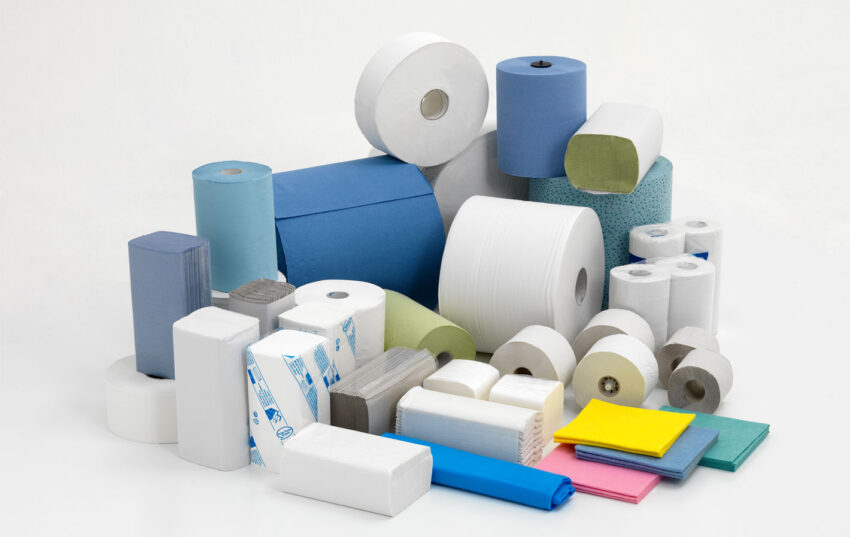The tissue and hygiene paper industry in Europe has seen significant growth in the past decade due to rising awareness about health and hygiene. The per capita consumption of tissue and hygiene products across the region remains below the global average, indicating further room for growth in the coming years. Let’s take a deeper look at some key aspects of this important industry.
Market Size and Growth Trends
The total size of the Tissue And Hygiene Paper In Europe was estimated to be over $30 billion in 2020. Tissue products such as toilet paper, facial tissue, paper towels and napkins accounted for the majority of the market. Baby diapers and adult incontinence products formed another key category under hygiene paper goods.
Between 2015-2020, the European market grew at a steady compound annual growth rate of over 3%. Growth was highest in Central and Eastern European nations where incomes were rising rapidly and consumers were becoming more health-conscious. Countries like Poland, Hungary and Czech Republic saw tissue sales increase by 5-7% annually during this period.
Per capita consumption of tissue products also saw an upward trend across Western European markets like Germany, UK, France and Italy indicating that tissue was becoming a regular part of personal hygiene routines even in developed nations. However, Eastern European nations still had significantly lower per capita volumes indicating the potential for continued above average growth.
The COVID-19 pandemic provided a major boost to tissue sales in 2020 as more people stocked up on paper towel and toilet paper due to lockdowns. This led to a short-term surge in demand bucking the general slowdown seen across other industries during the pandemic. Continued high awareness about hygiene is likely to keep tissue sales elevated even post-pandemic compared to pre-COVID levels.
Leading Players and Market Share
The Europe tissue market remains highly competitive with several multinational companies vying for leading positions across various nations. Essity, Kimberly-Clark, Sofidel and WEPA are some of the largest tissue producers in the region with pan-European operations and brand presence.
In Western Europe, Essity has the largest market share estimated at over 20% in 2020 followed by Kimberly-Clark. In toilet paper, the leading brands include Tempo, Zewa and Scott. Facial tissues see strong brands like Kleenex and Edet competing. The away-from-home market comprising public washrooms is dominated by large paper towel brands.
Central and Eastern Europe witnessed more fragmented national-level competitors, however leading multinationals were rapidly expanding their footprint. Players like WEPA were increasing investments in countries with higher growth opportunities. The private label segment also saw its share rise in line with value fashion trends.
Raw Material Dynamics
Both virgin and recycled fiber are used in the manufacture of tissue and hygiene paper products. Virgin pulp accounts for 60-70% of raw material needs across European markets given quality standards. Major fiber sources include birch and eucalyptus from Scandinavia and Iberian Peninsula. Over 50% of fiber requirements are met through imports from countries like Brazil, Indonesia and Canada.
Recycled fiber also plays a key role given sustainability priorities. Domestic waste paper collection rates differ vastly across Europe – from 65% in Germany to under 30% in nations like Poland and Greece. This has led to increased imports of recycled pulp for tissue and hygiene producers in low collection regions. Prices of virgin pulp fluctuate based on global demand-supply factors while recycled fiber rates depend on collection volumes.
Product Innovation and New Launches
European tissue makers constantly strive to innovate and launch new products to suit evolving consumer preferences. Sophisticated non-woven manufacturing capabilities allow production of premium toilet paper, wipes and feminine hygiene lines. Organic, recycled and eco-friendly variants targeting conscious consumers form a key areas of NPD.
Premium toilet papers infused with lotions and perfumes are popular across Southern Europe. Nordic countries prefer functional indulgence with sauna-friendly tissues. Central Europe focuses on value for money private labels. New formats like pops-up tissues, wet wipes and combined toilet-bim products are improving usage convenience. COVID-19 accelerated demand for scented hand sanitizing and surface disinfecting wipes.
Future Potential
Driven by strong fundamentals across both mature and emerging nations, the tissue industry in Europe is projected to maintain a healthy growth rate of 2-3% in the medium term despite near-term fluctuations. Rural penetration of basic products still offers scope while new formats and value-added premium lines can further lift category consumption per capita.
Continued investments in recycling infrastructure would aid raw material security and sustainability positioning essential for this sector. Innovations matching changing hygiene habits post-COVID also provide opportunities. Strategic expansions and acquisitions are likely to consolidate certain national tissue spaces over time. Overall, the European market for tissue and hygiene paper looks set to steadily advance on its path of evolving demand and product innovations in the foreseeable future.

